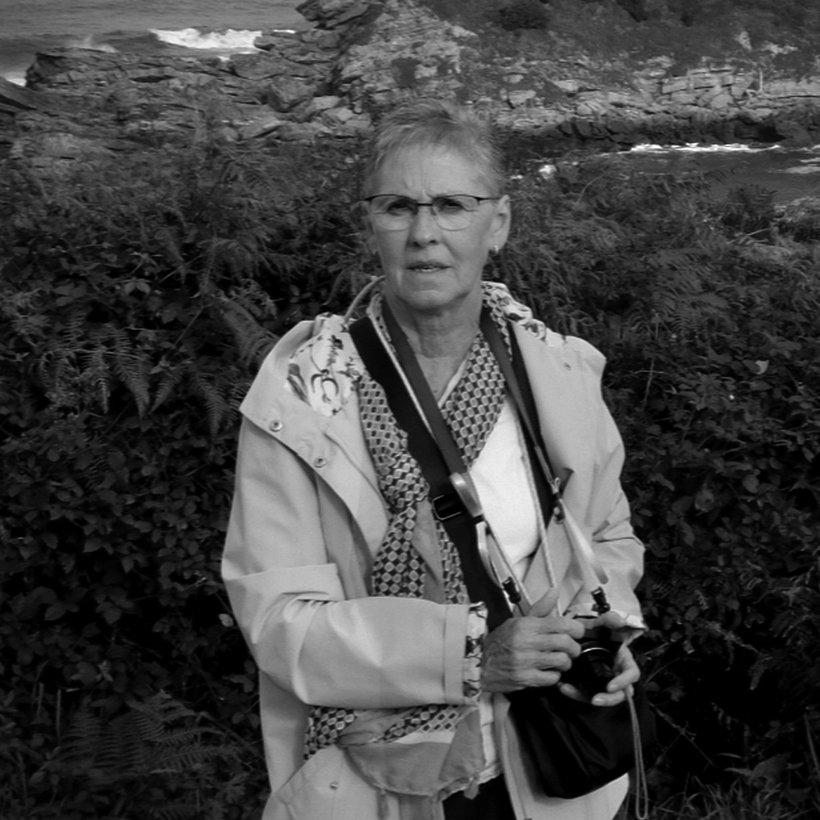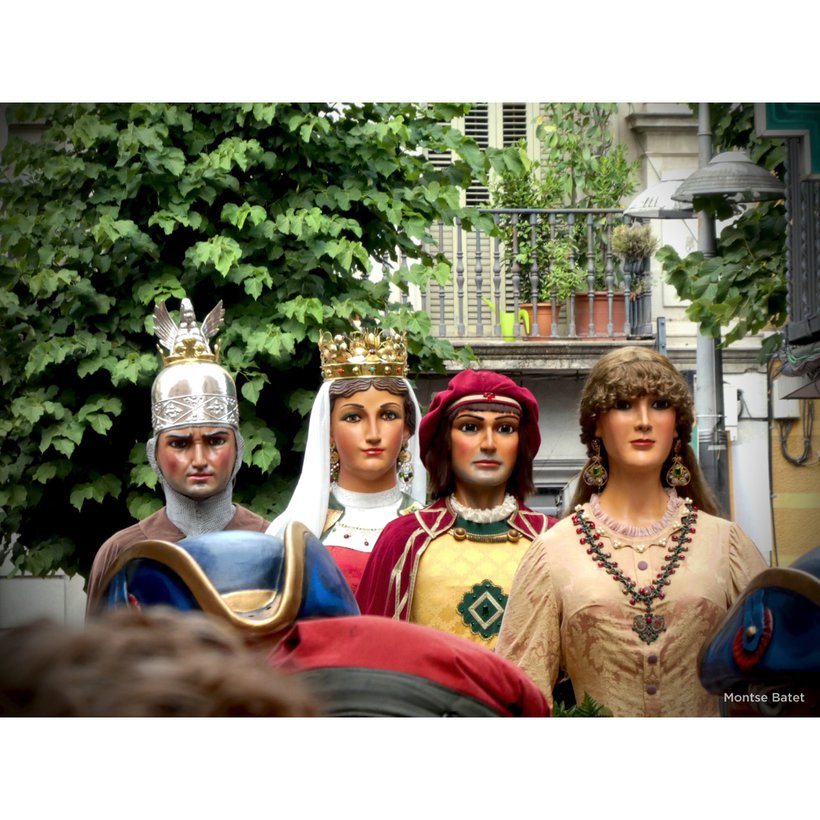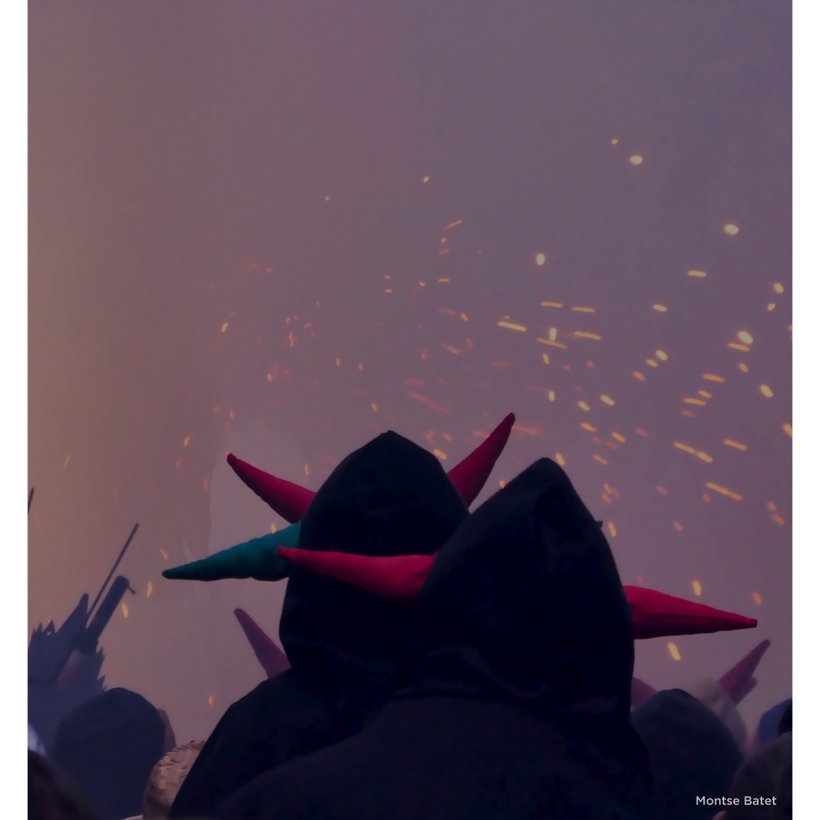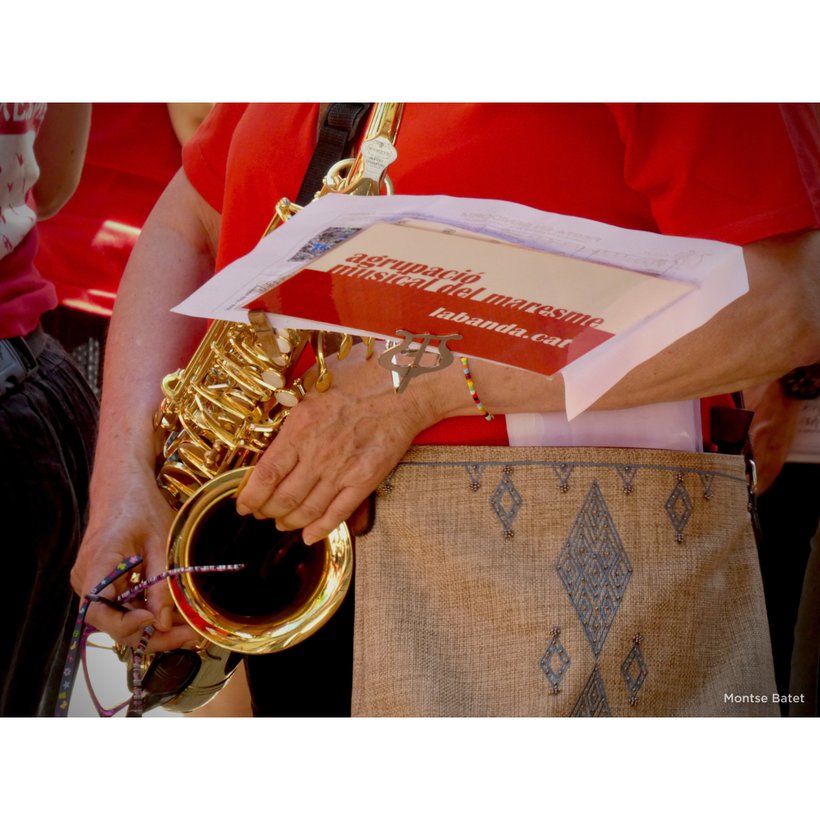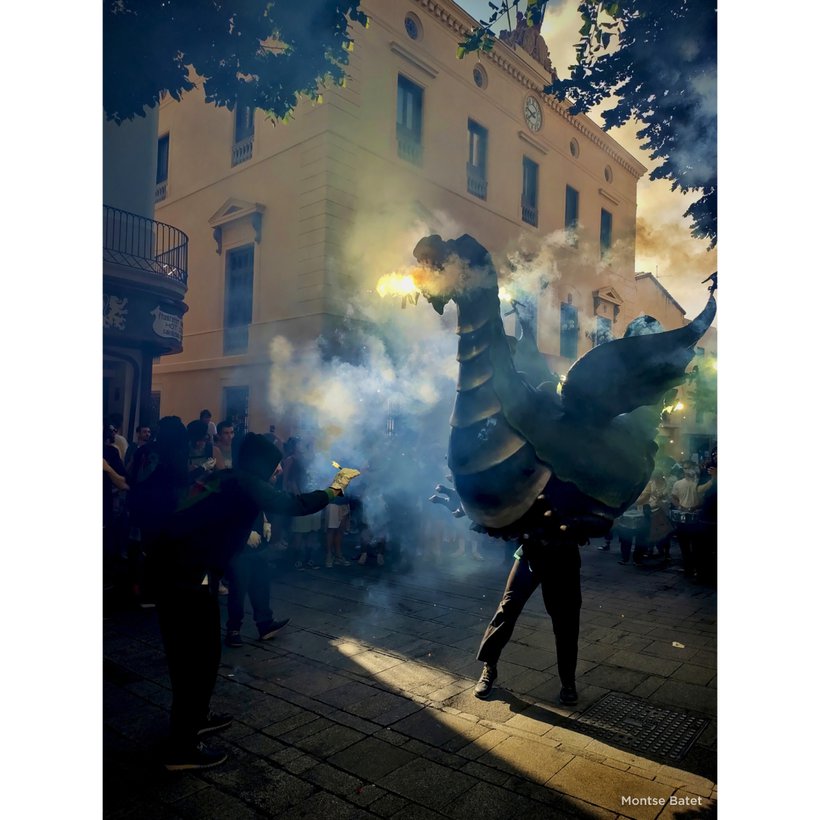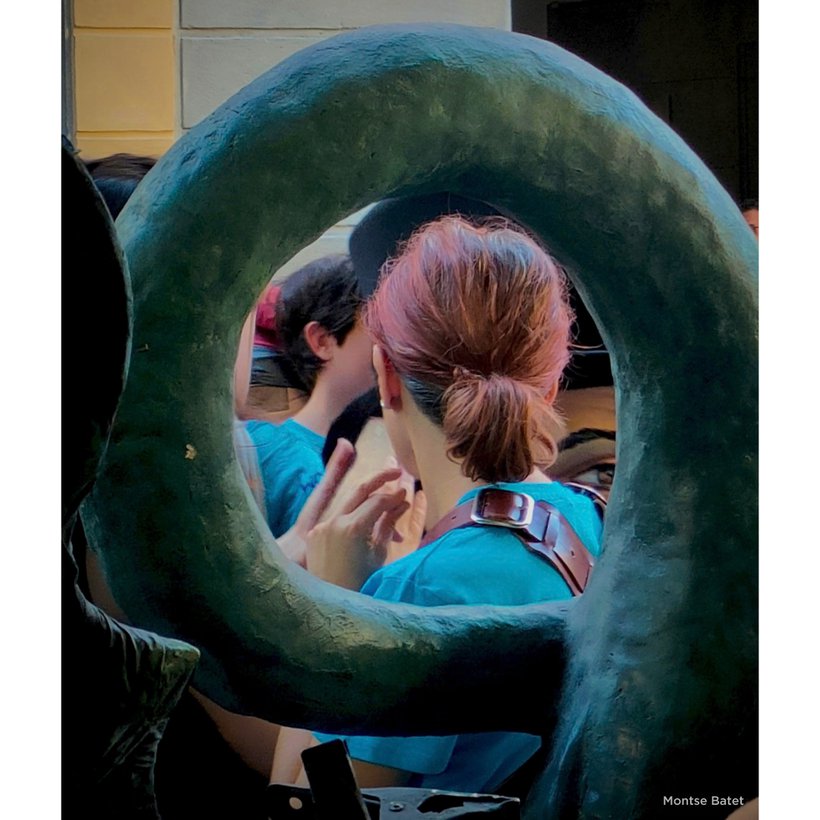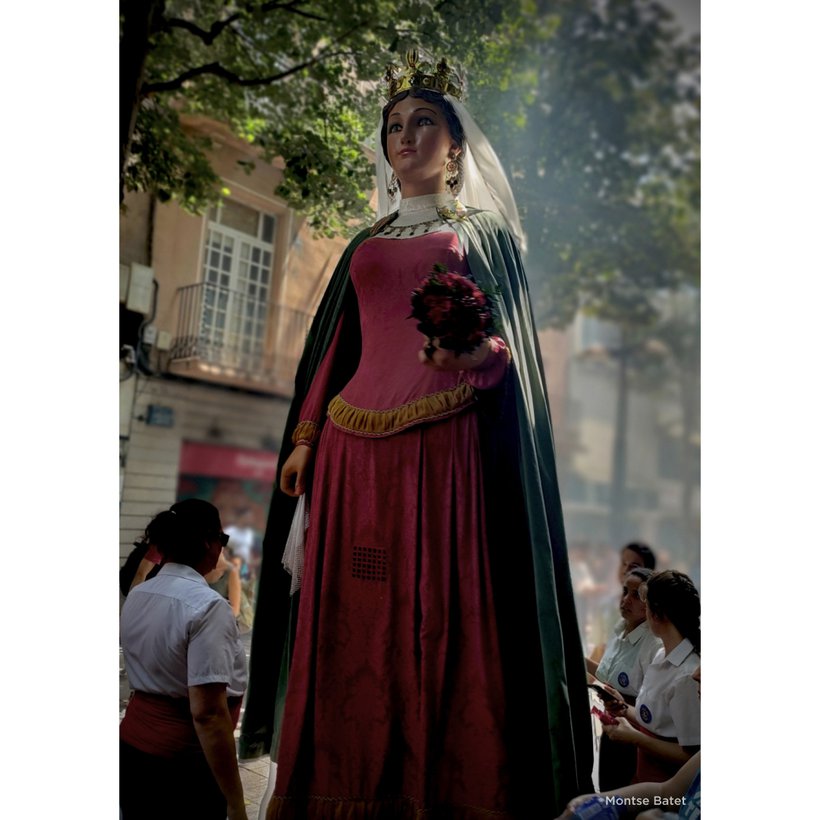Montse Batet
Montse Batet
Title of the photo displayed at the Frèsia flower shop in Mataró:
Geganta
Photo Description:
LA GEGANTA is her proper name. She is not known by any other, and that's because she alone is the geganta among all gegantes.
With a calm and gentle presence, a beautiful yet modest dress, a lovely crown, elegant earrings, a ring on her right hand, and a delicate handkerchief in her left. The coat of arms of Catalonia and that of our city hold her cloak at the top corners, joined by a fine ornamental chain. All of it makes us think of a truly great geganta.
A geganta who also has her own moment during Les Santes: at midday on the 28th. As she leaves the care home and returns to City Hall, she becomes almost the sole protagonist of the parade. She dances and dances without rest, and is the last to go to sleep. She performs the final dances and everyone shouts: "No n’hi ha prou!"
But who knows? Perhaps, over time, this single moment of spotlight will become a thing of the past — giving way to a gesture of equity and equality.
Visca la Geganta!
Who is Montse Batet?
A true Mataró local and “Santera” through and through, that’s me Montse.
It was in 1982 when I stopped seeing Mataró’s Festa Major as something rather boring and started to realise that we were beginning to have much more than just the Gegants’ procession, the Balls de Festa Major, and the Focs Artificials at the beach.
I rediscovered the Família Robafaves: the Gegants, the Nans and Capgrossos, and all the other figures that make up our comparses and the seguici festiu. Over the years, I’ve seen how many events came to life — most of which have stayed and become a genuine part of our Festa Major.
Events like the Desvetllament and the whole Nit Boja, Les Matinades, l’Anada and, above all, the Tornada de la Residència, the Postal de Gegants, the Requisits de Festa Major, the No n’hi ha prou, and many others that still coexist today. Some, over time, have been replaced — like the Anem a Tancar on the final day, which used to go from the Ajuntament to Can Marfà, and is now replaced by the walk to Llar Cabanellas, where the figures made their last visit to the elderly. Afterwards, spontaneously, it ended with a farewell and the figures being closed up at l’Escorxador.
There have also been some great new additions like the Tarda Guillada (the Desvetllament Bellugós for the little ones, with a children’s correfoc and ruixadeta), created to make sure even Mataró’s youngest don’t miss out on their own Nit Boja.
And well, over the years —living the Festa intensely in the streets and with how easy it is now to take photos— I’ve taken many: of the figures, the events and concerts, the authorities and guests, of us —the ones who fill the streets each day of Festa Major— and of so many volunteers who, entirely selflessly, make it possible for us to enjoy this immense festive and cultural heritage that is our Festa Major.
The one of Les Santes, the one of Mataró, ours

